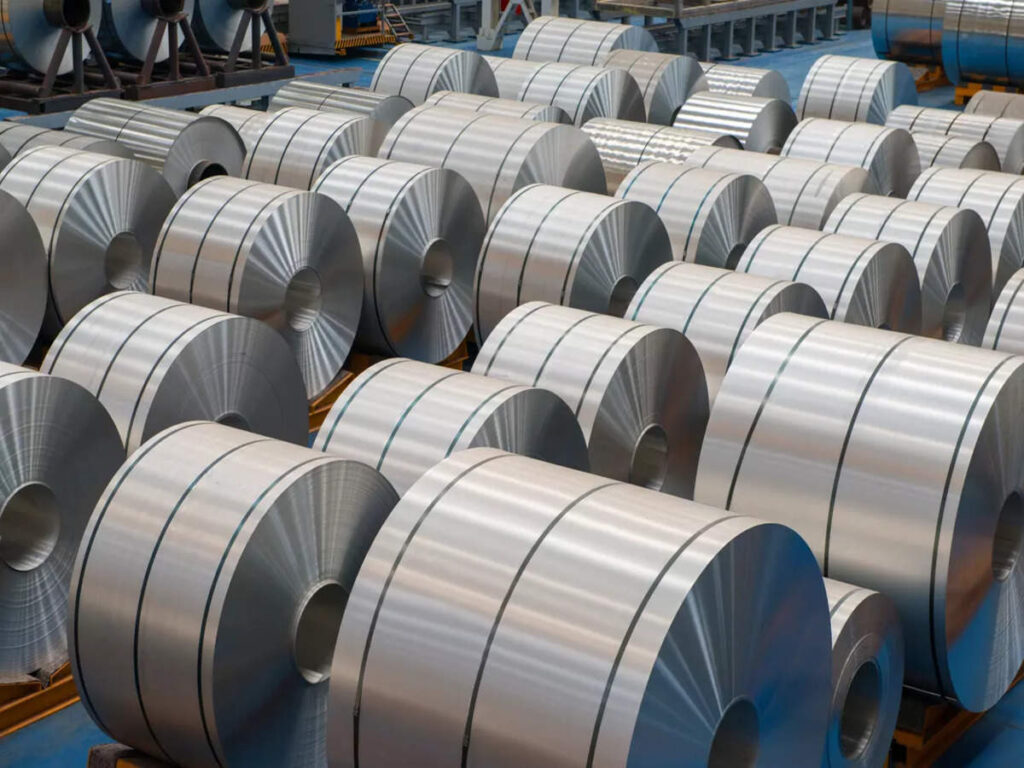The Indian steel industry is gearing up to shift toward carbon neutrality with significant opportunities and challenges driven by global climate imperatives and domestic sustainability goals. The dynamics of the sector globally are evolving at a fast paceand as international regulations, such as the European Commission’s Carbon Border Adjustment Mechanism (CBAM)take effect in 2026, the sector will need to adhere to strict carbon emission standards to remain competitive in export markets. This development resonates with India’s aggressive target of becoming carbon neutral by 2070 and calls for a transformation in traditional steel production practices.
CBAM integrates monitoring, reporting, and verification (MRV) frameworks across industries, encouraging investments in carbon emissions reduction projects. For India’s steel industry, which exported Rs 45,692.6 crores worth of iron and steel to Europe in FY2023-2024, adapting to CBAM is crucial to sustaining this valuable trade relationship. The transition to green steel involves reducing carbon emissions and conserving natural resources through sustainable manufacturing practices.
India has pledged to become carbon neutral by 2070, and is supported by policies such as the Carbon Credit Trading Scheme 2023 launched on June 28, 2023, under the Energy Conservation Act 2001. This scheme provides a framework for reducing the intensity of Greenhouse Gas (GHG) emissions in line with India’s Nationally Determined Contributions (NDC). Additionally, the carbon credit policy offers incentives for steelmakers to switch from the traditional Blast Furnace-Basic Oxygen Furnace (BF-BOF) method to the Hydrogen-based Direct Reduced Iron-Electric Arc Furnace (H2-DRI-EAF), which is an environmentally friendly alternative.
The Ministry of New and Renewable Energy (MNRE) has introduced the SIGHT (Strategic Interventions for Green Hydrogen Transition) scheme, allocating Rs 455 crore until FY 2029-30 to promote the production of green hydrogen in industrial processes, including steel production. This scheme provides subsidies and financial support for steel plants to blend a small percentage of green hydrogen into their processes, facilitating the transition to more sustainable practices.
The steel industry in India currently relies heavily on the BF-BOF route, which accounts for 74% of the industry’s energy demand due to its reliance on coal. This route produced 54.585 million tonnes of crude steel in 2021-22, with an 82% capacity utilization rate. In contrast, the Electric Arc Furnace (EAF) route, which primarily uses recycled steel scrap, produced 30.498 million tonnes of crude steel at an 83% capacity utilization rate.
Green hydrogen, produced from renewable energy, can revolutionise steel production by substituting coal as a reducing agent, bringing carbon emissions down drastically. However, the production and transportation of hydrogen pose challenges. Hydrogen production must be geographically separated from the DRI-EAF plants, necessitating a reliable and cost-effective transportation network. The Ministry of Ports, Shipping, and Waterways has identified three major ports—Deendayal(Gujarat), Paradip (Odisha), and V.O. Chidambaranar (Tamil Nadu)—to be hydrogen hubs, thus outlining the importance of strong infrastructure in promoting the production and distribution of hydrogen.
Strategic policy recommendations:
- Develop a Green Steel Corridor: Inspired by the European Union’s Connecting Europe Facility (CEF) model, India should establish a dedicated funding mechanism to develop transportation networks and support pilot projects for green steel production. This initiative would include iron ore locations, and hydrogen production sites, reducing production costs and making them more export-competitive.
- Enhance Iron Ore Utilization: With significant haematite and magnetite deposits, India should focus on ironmaking in regions with abundant renewable energy. Developing high-purity iron ore (65-66% Fe content) is crucial for efficient DRI-EAF processes, minimizing corrosion and maximising yields. Alternatively, indigenizing technologies that can cater to the Green Hydrogen (GH)-based DRI with Fe content in the range of 60-66%, typically found in India, should be prioritised.
- Promote Scrap Recycling: Increasing the use of scrap metal can significantly reduce energy consumption and greenhouse gas emissions. India should enhance its scrap collection and recycling infrastructure, leveraging policies like the Recycling of Ships Act 2019.
- Invest in Hydrogen Infrastructure: A nationwide hydrogen pipeline network, inspired by the European Hydrogen Backbone (EHB) initiative, would also enable cost-effective transportation of hydrogen to steel plants to prevent geographical disparities in both production and consumption.
- Foster Innovation in Steel Manufacturing: R&D and public-private partnerships should be encouraged to accelerate the development of indigenous technology in the Indian steel sector, as well as innovative steel manufacturing technologies, to make green steel both economically viable and environmentally friendly.
- Policy Harmonization and Incentives: Align national policies with global standards, particularly those set by the EU under CBAM. Providing financial incentives for adopting green technologies, such as tax breaks or subsidies, can drive the industry’s transition towards sustainability.
In short, the sector now stands at the brink of a green revolution with monumental potential to lead the world in terms of sustainable steel production. Aligning domestic policies with international standards, such as CBAM, will position India as a global leader in sustainable steel production while ensuring its long-term environmental and economic sustainability.
Source: The Economic Times

 US To Impose Sanctions On Russian Oil, Indian Supplies May Be Hit
US To Impose Sanctions On Russian Oil, Indian Supplies May Be Hit 